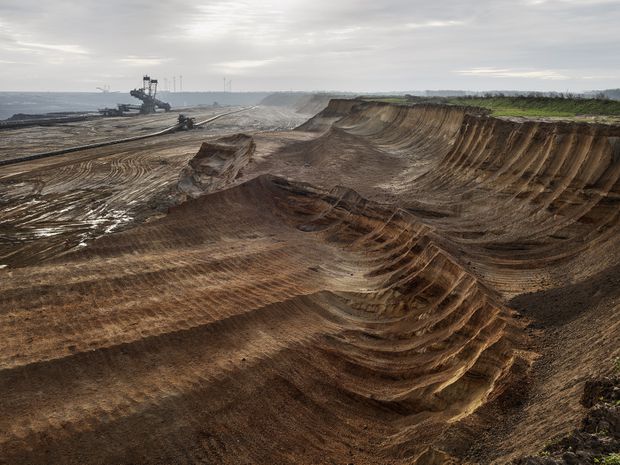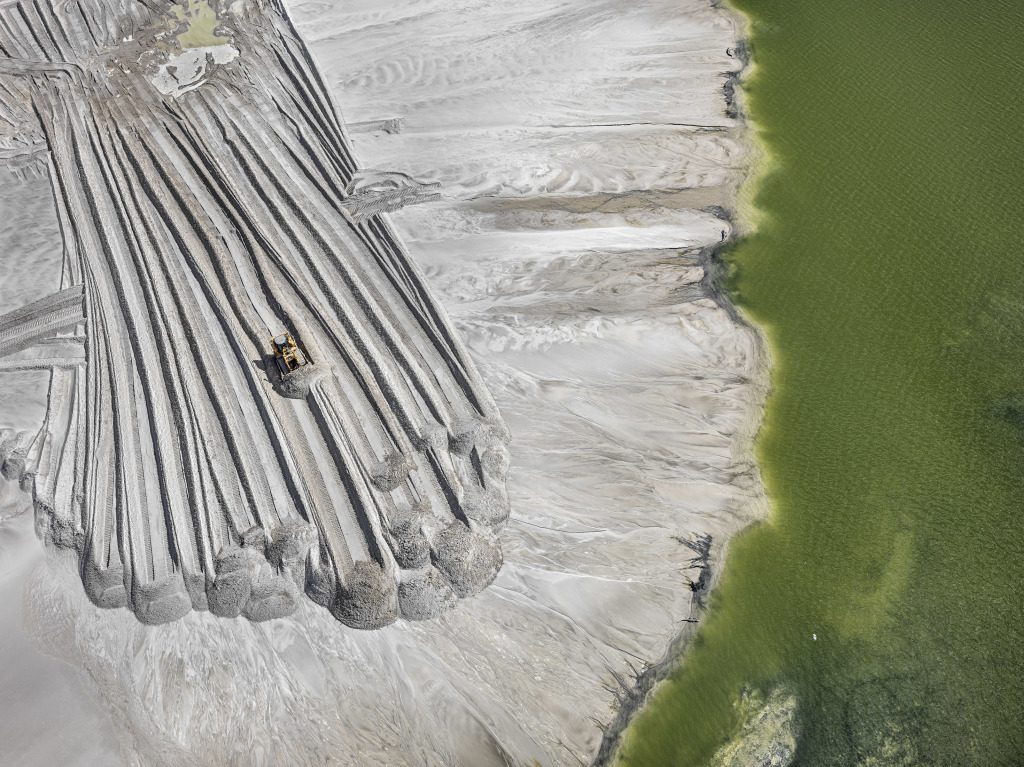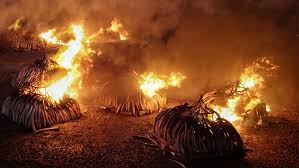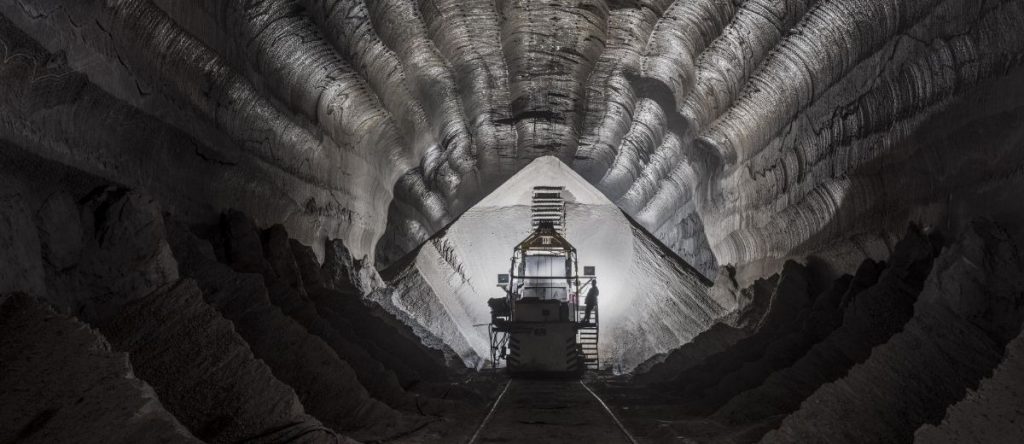RIO DE JANEIRO, BRAZIL – I’d have to agree. But, fundamentally, ANTHROPOCENE is a clarion alarm that reverberates inspiration as well as caution and that makes it a must-see for all humans who hope that planet Earth will be habitable by our progeny and their progeny for many generations to come.
ANTHROPOCENE, the latest from Canadian documentarian Jennifer Baichwal, is an epic cinematic meditation focusing on human impact on Earth’s evolution. Through image and narration, it presents the research of the Anthropocene Working Group, an international body of scientists who track Earth’s geological evolution.
After a decade of intensive study of the layers of Earth’s surface, this exacting group of official timekeepers argues that our planet has moved into a new epoch, the titular Anthropocene, in which rapid changes to Earth’s geology are being caused primarily by human behavior. The forecast is not good.
Dating from the mid-twentieth century, the Anthropocene (meaning “human epoch”) is a very new epoch. It marks the end of the Holocene (meaning “entirely recent”) which, according to geological time charts, dates back about 11,650 calendar years and has been a period of relatively slow change with few earth-shattering catastrophic events.

To illustrate the conditions that brought the scientists to announce the Anthropocene epoch, Baichwal and co-directors Edward Burtynski and Nicholas de Pencier traveled around the globe photographing diverse geographical locations representative of our planet’s transformation at the hand of our species.
With exquisite footage that often looks like museum-worthy abstract paintings, the filmmakers show the devastated Great Barrier Reef in Australia, the concrete seawalls that now cover 60 percent of the mainland coast in China, the toxic glow of potash mines in Russia’s Ural Mountains, the psychically disturbing public festival celebrating metal mining in the critically polluted city of Norilsk, the confiscation and destruction of tons of poached elephant tusks in Kenya, the geological deconstruction brought by modern mining of ancient marble quarries in Carrara, and the use in Germany of super gigantic industrial Mechagodzilla-like machines – the world’s largest – to strip mine, devouring what was once pristine forest and productive farmland.
Compared to those monstrous machines, humans in the frame seem like mere specks of life. Often, those who inhabit other threatened and threatening environments are shown as tiny creatures whose swarming behavior physically impacts Earth’s surface.
When the camera zooms in on local folk for commentary, they seem aware of the magnitude of their circumstances and daunted by them. Humans are altering the Earth’s surface, without guiding principles or controls.

While these intensely ugly markings of mankind are revealed through absolutely exquisite camera work, narration in the voice-of-God style (written by Baichwal and delivered in the gentlest, most persuasive tones by Alicia Vikander) informs us of the Anthropocene Study Group’s findings, what they mean for our present and humankind’s future, and why we should care.
The narration informs us that eventually human detritus – a proliferation of obsolete cell phones and tablets, discarded tires and plastic containers, drums filled with toxic waste and vials of outdated drugs, and all the other stuff we throw away — will cover the Earth’s surface, becoming our one and only home planet’s new sedimentary rocks.
The voice-of-God narration doesn’t suggest that the Anthropocene will end not with Earth’s disappearance, but when Earth can no longer sustain the species that initiated the epoch.
I deliberately apply the term voice-of-God to the film’s narration because the intricate interplay of words and images in ANTHROPOCENE attains qualities suggestive of religious tomes – somewhat the way the Bible, as one example, teaches precepts while recording events of ancient (in human, not geological terms) history.
With its meditative tone, epic scope and persuasive editorial style, ANTHROPOCENE invokes contemplation of fundamental human questions – those “where did we come from?”, “what is our purpose?” and “where are we going?” questions that are addressed in some form or other by most religions and secular philosophical considerations.

I’m no more a preacher or philosopher than I am a scientist or geological timekeeper but it occurs to me that implicit in these questions is our species’ collective unconscious assumption – or belief, perhaps – that we are here on Earth to learn life lessons that will evolve us as individuals and as a species, and will transform us in some way to a purer state of being, deliver us to a higher plane.
That said, I find that ANTHROPOCENE taps into that underlying life-on-Earth-is-a-lesson-assumption and suggests that we must quickly redirect our current learning curve from centering on how to accumulate more stuff at ever-increasing speed to how we can create sustainable modes of behavior that will not transform our glorious planet Earth into a junk yard where we can no longer live.
Of course, the theme of humans and sustainability is certainly not new to cinema. In fact, many wonderful documentaries and fiction features that focus on how human behavior impacts life on Earth would make good double bills with ANTHROPOCENE.
In the documentary genre, Mathieu Roy and Harold Crooks’ enlightening SURVIVING PROGRESS (2011) shows that humans’ advances in technology aren’t always good for the species.
For example, the film presents the story of prehistoric human hunters who devised methods of killing two bison at a time, getting twice the yield with half the effort. Expanding that technology, they figured out how to kill multiple bison simultaneously by driving the herd off a cliff.

However, that advance in efficiency and productivity led to the species’ demise. Harvesting all bison at once seemed clever, but the hunters hadn’t calculated that killing the entire herd would leave them without a future food source. They couldn’t survive their progress. Their story easily updates to today’s deforestation,
In the fiction feature category, IDIOCRACY (2006), the hilariously humorous and subversively satirical comedy written and directed by Mike Judge, thrusts a perfectly average American Joe (Luke Wilson) five centuries into the future, where he finds the human species dumbed down to idiot level because starting in the mid-twentieth century, brainy people chose career advancement over parenthood, leaving only dumb people to produce progeny.
Joe, with barely a high school education and low-ish IQ, is suddenly the smartest guy in America, maybe even smart enough to figure out how to raze the mountains of garbage that shape Earth’s topography.
I highly recommend both of these films that were made during the Anthropocene Study Group’s investigations and smartly address the issues raised in ANTHROPOCENE, but neither of them rise to the commanding authority achieved in this documentary that sounds an alarm over the arrival of Earth’s Human Epoch.
SURVIVING PROGRESS and IDIOCRACY can both be seen online via Amazon Prime. ANTHROPOCENE is being released in theaters by Kino Lorber later this month, and should see a DVD and online release following the theatrical.
Keep your eyes peeled for it. It is essential viewing.

